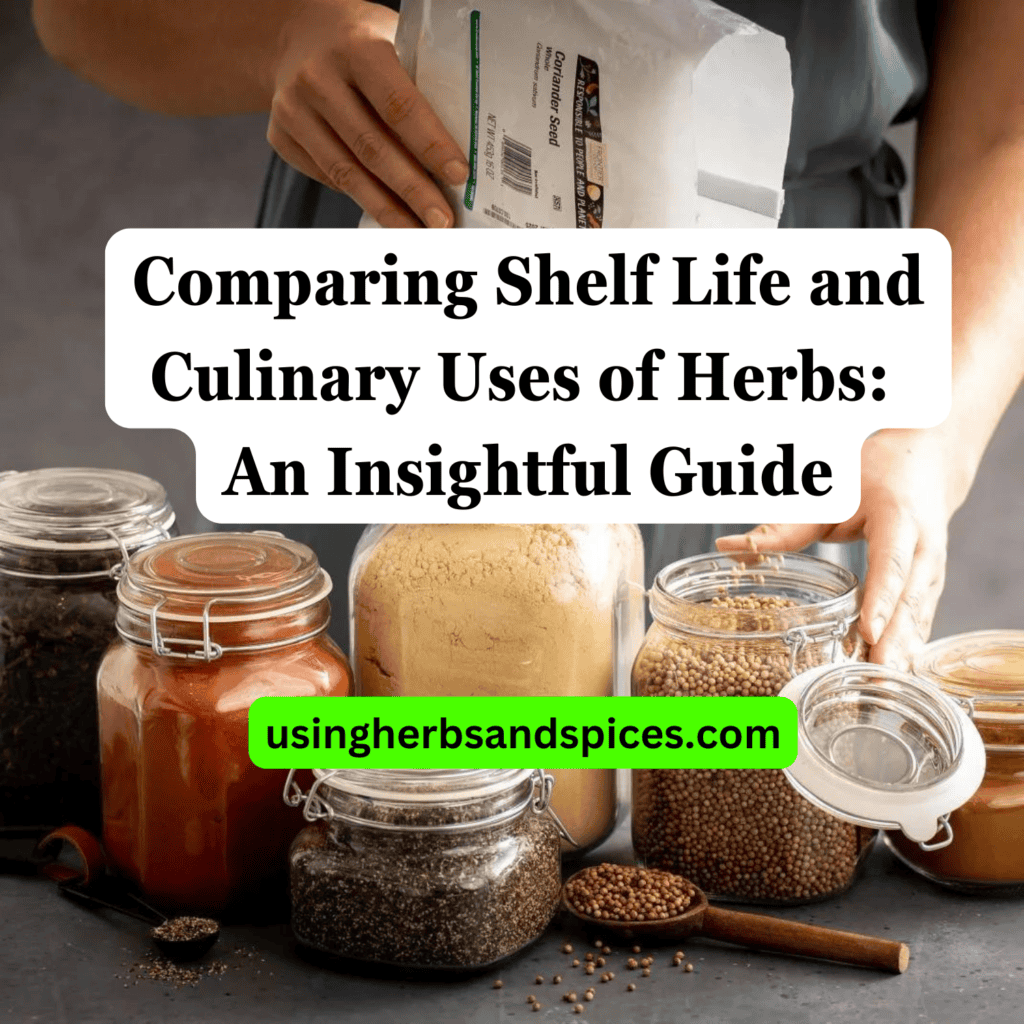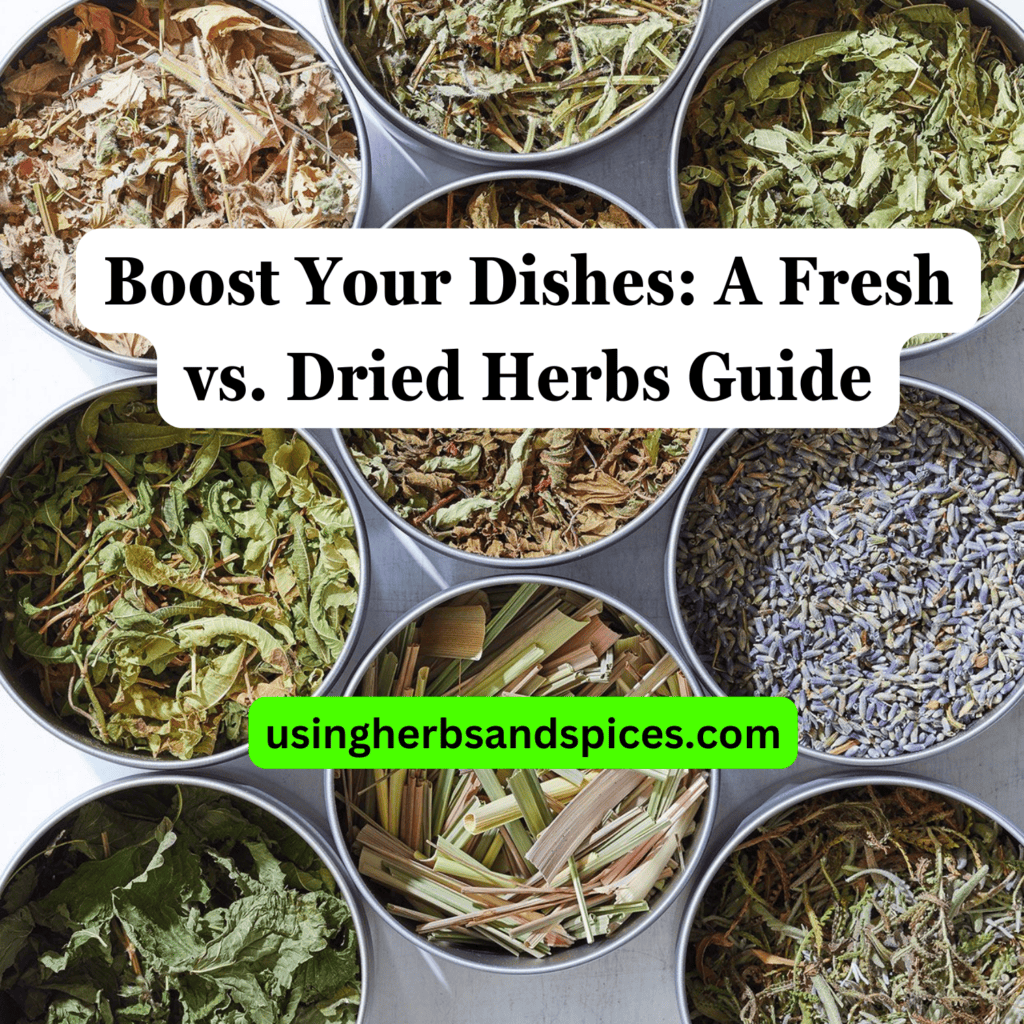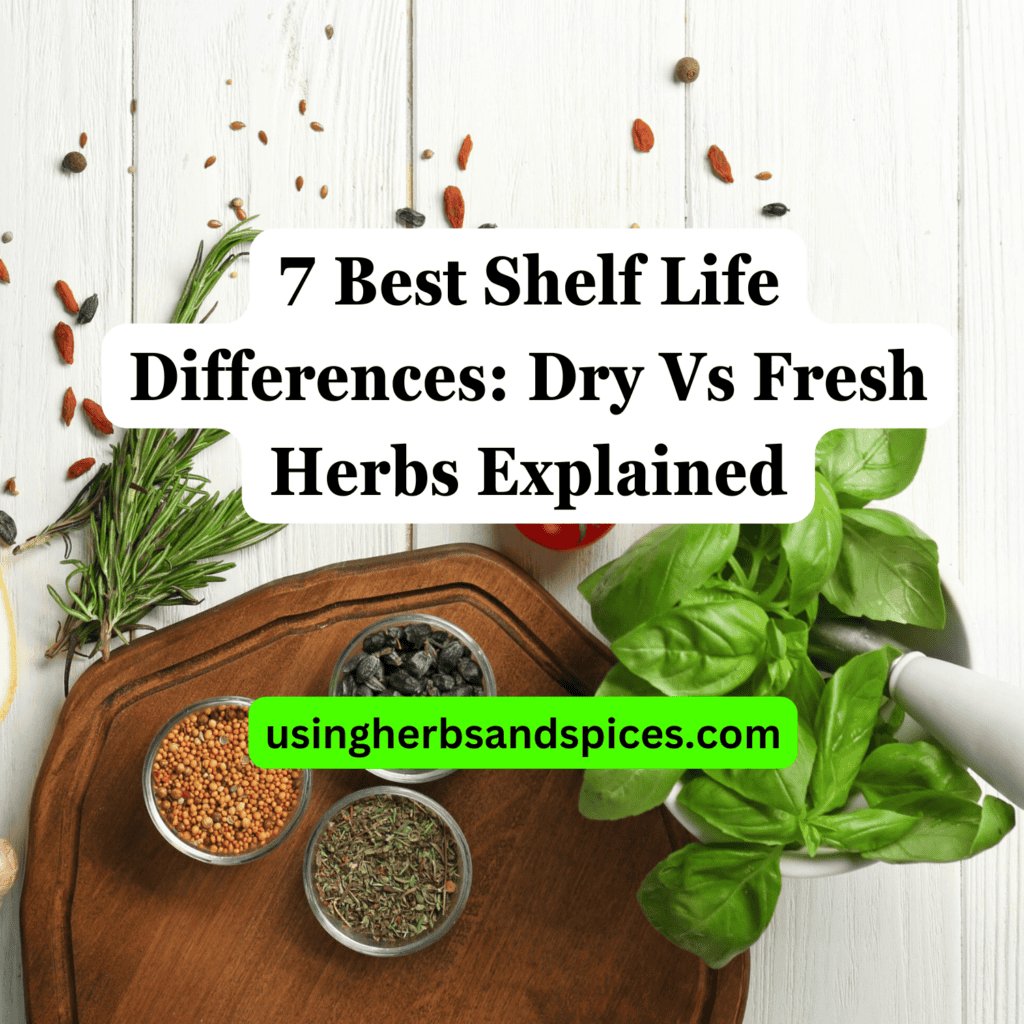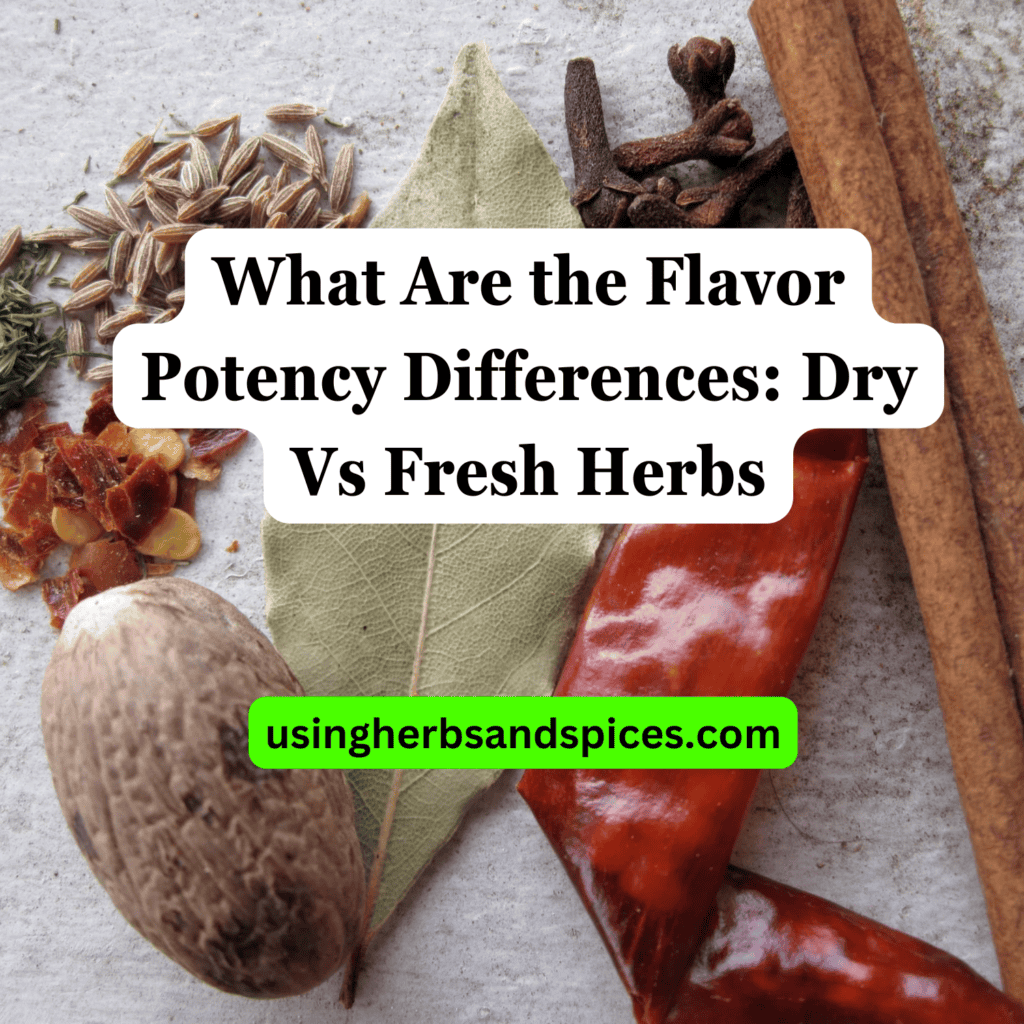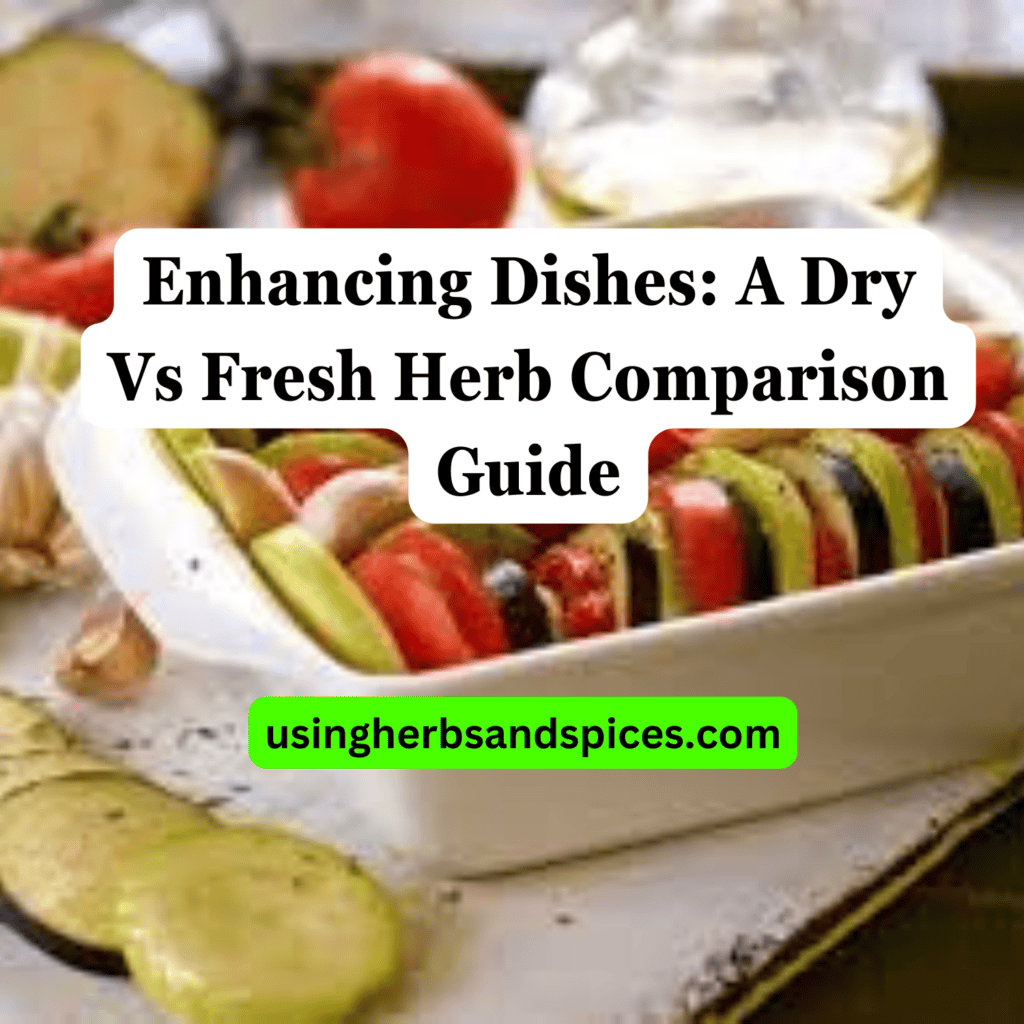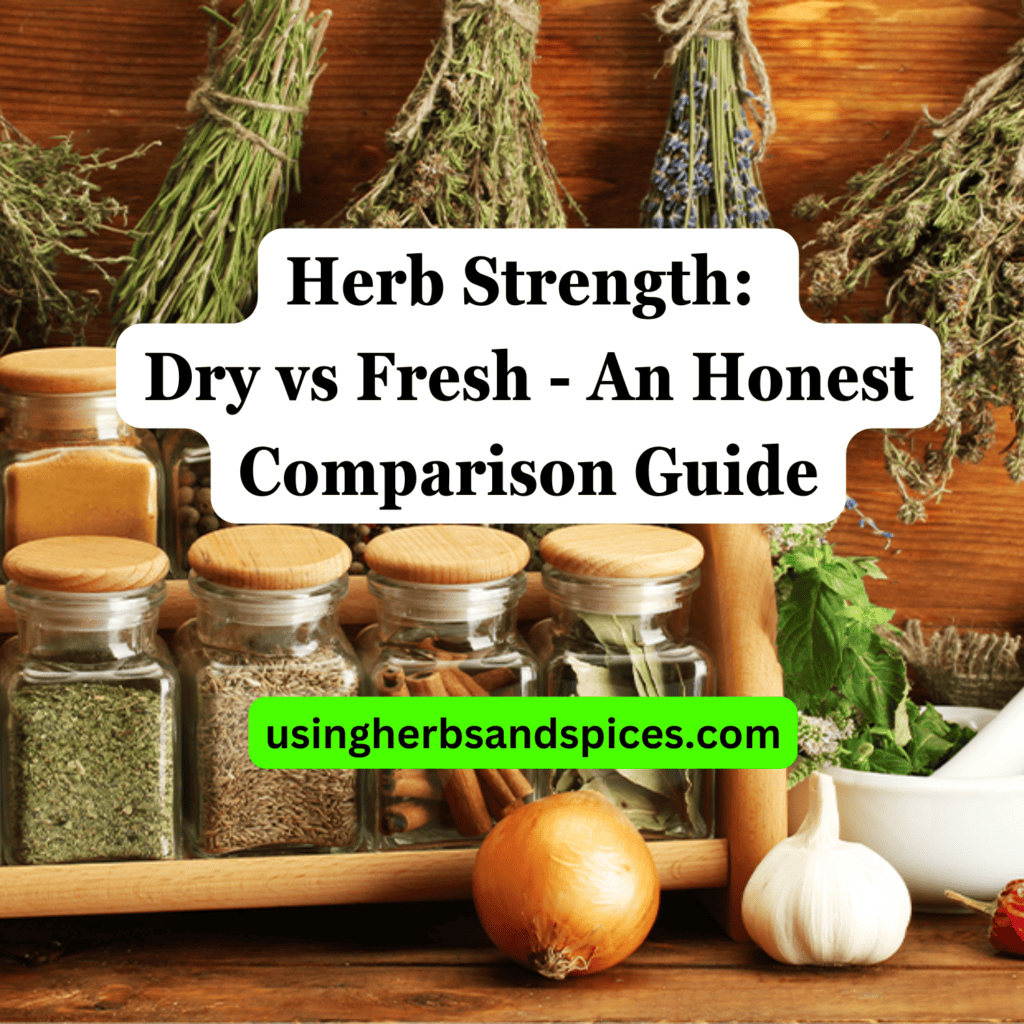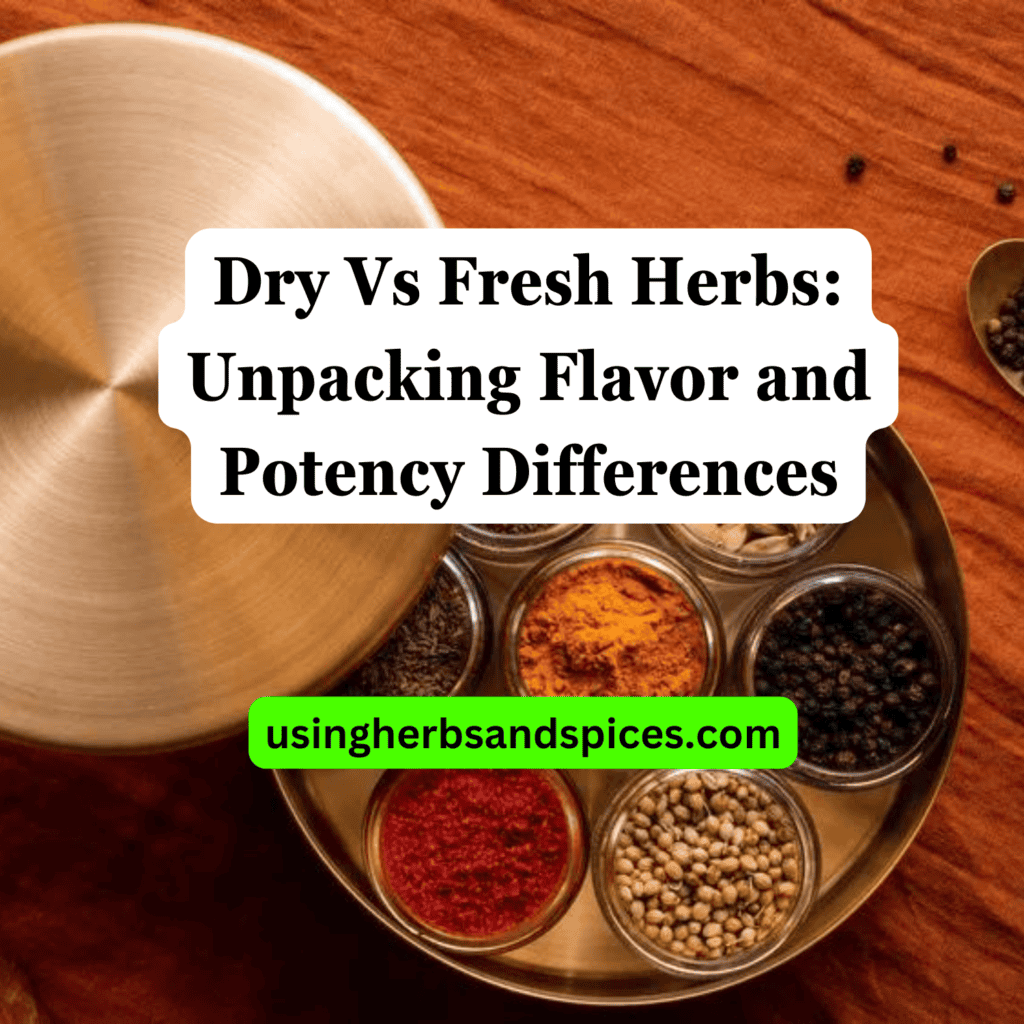SUMMARY: Fresh herbs typically last for 1 to 3 weeks in the fridge, while dried herbs can maintain their flavor for up to 3 years when stored properly. Knowing how to store these herbs can help extend their shelf life and ensure your dishes are always flavorful.
Ever wondered why your dishes lack that vibrant punch even though you’re using herbs?
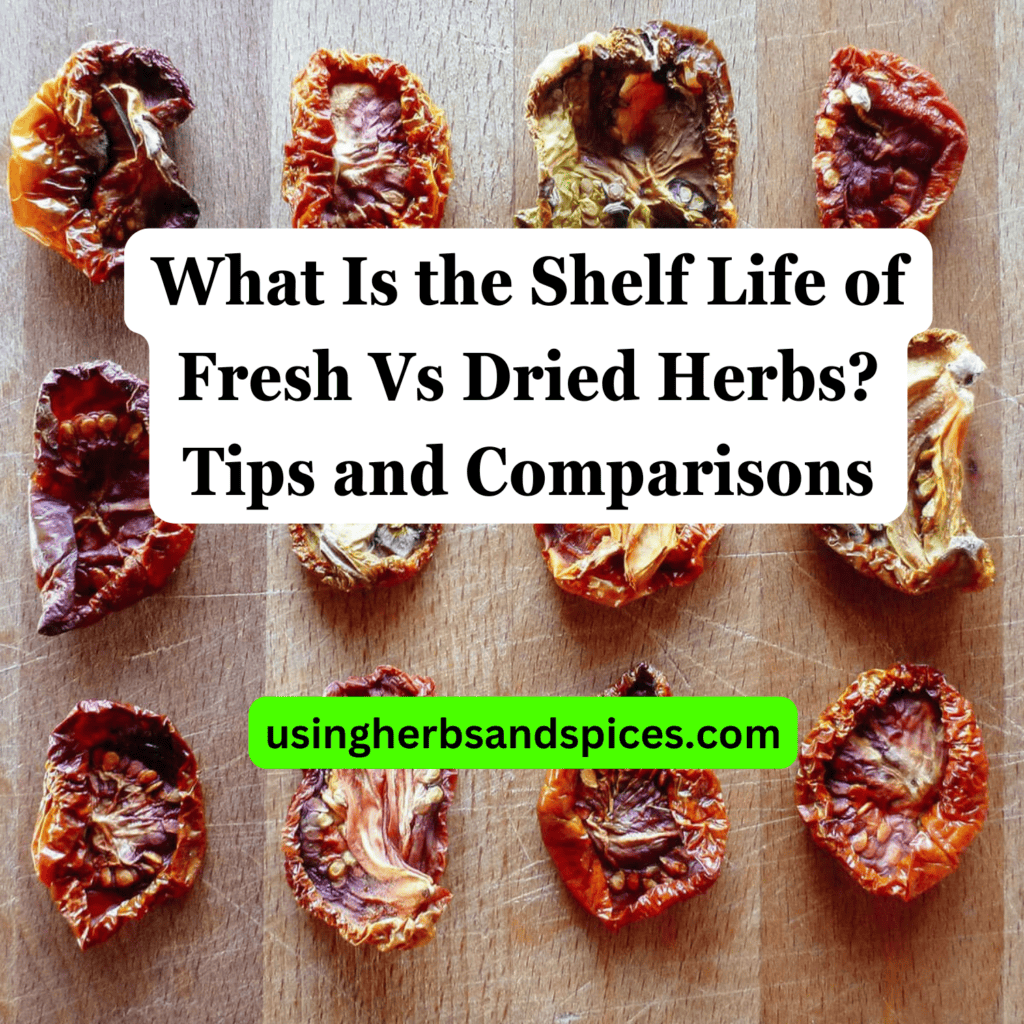
You’re not alone, and the secret might just be in understanding the shelf life of your herbs.
- The importance of herb shelf life
- How to store fresh herbs for maximum longevity
- Keeping dried herbs potent and flavorful
- Deciding between fresh and dried herbs for your meals
Keep reading to unlock the full potential of herbs in your culinary creations and make every dish unforgettable.
Importance of Understanding Shelf Life
Knowing the shelf life of herbs, whether fresh or dried, is not just about maximizing flavors—it’s about food safety and economic efficiency. Herbs, like any other food, can spoil or lose their potency over time. Using herbs past their prime not only diminishes the flavor profile of your dishes but could also lead to food spoilage, wasting both your ingredients and your efforts. Moreover, understanding the different shelf lives of fresh versus dried herbs enables you to make informed decisions when purchasing or using them in your cooking, ensuring you always bring out the best in your meals.
Fresh Herbs: Shelf Life and Storage Tips
When it comes to fresh herbs, their shelf life can vary significantly depending on the type, how they’re stored, and their freshness when purchased. Generally, fresh herbs can last anywhere from several days up to two weeks if stored properly. Herbs like parsley, cilantro, and basil are known for their relatively shorter shelf life, requiring specific storage methods to prolong their freshness. For instance, storing these herbs in the refrigerator with their stems immersed in water can extend their usability.
To maximize the shelf life of fresh herbs, it’s crucial to keep them dry and refrigerated. Wrapping the herbs loosely in a damp paper towel and placing them inside a resealable plastic bag or container can help maintain moisture and freshness. It’s important to check the herbs regularly and remove any wilted or brown leaves to prevent spoilage from spreading.
Furthermore, utilizing the right storage technique based on the herb’s characteristics is essential. Soft herbs like cilantro and parsley benefit from being treated like bouquets of flowers, while hardy herbs such as rosemary and thyme are best stored in a dry environment. Regularly trimming the stems and changing the water can greatly increase the shelf life of soft-stemmed herbs.
In summary, understanding and implementing proper storage methods for fresh herbs can significantly affect their longevity and ensure they retain their flavor and nutritional value for your culinary uses.
Dried Herbs: Shelf Life and Storage Tips
When properly stored, dried herbs can be a culinary delight, offering a concentrated burst of flavor and aroma that enhances dishes for a surprisingly long period. Unlike their fresh counterparts, dried herbs boast an impressive shelf life, generally remaining potent for 1 to 3 years. This longevity stems from the dehydration process, which removes the moisture that bacteria need to grow, thereby reducing the risk of spoilage.
To maximize the shelf life and preserve the quality of your dried herbs, certain storage principles should be followed. First and foremost, keeping your dried herbs in a cool, dark place can significantly extend their usability. Light and heat are the enemies of dried herbs, gradually depleting their aromatic oils and fading their vibrant colors. A pantry or a cupboard away from the stove or any heat source is ideal.
Moreover, it’s crucial to store dried herbs in an airtight container. Exposure to air not only diminishes their flavor but can also introduce moisture, leading to caking or, worse, mold. Glass jars with tight-sealing lids, or even vacuum-sealed bags, are excellent choices for preserving the integrity of dried herbs.
Last but not least, the way dried herbs are treated during their use can also affect their shelf life. It’s advisable to avoid touching the herbs with damp utensils or fingers and to crush them just before adding to your dish to release their full flavor. By adhering to these storage tips, you can ensure that your dried herbs remain a vibrant and flavorful addition to your culinary repertoire for as long as possible.
Comparing Fresh and Dried Herbs
Understanding the differences between fresh and dried herbs is essential for both novice cooks and seasoned chefs alike. Fresh herbs, with their bright and vibrant flavors, are best used in dishes where their freshness can shine through, such as salads, marinades, and garnishes. Their shelf life, however, is significantly shorter than that of dried herbs—typically lasting only a week or two in the refrigerator, even when stored properly.
In contrast, dried herbs offer a more concentrated flavor and are best suited for dishes that cook for longer periods, such as stews, soups, and sauces. Their reduced moisture content not only contributes to a longer shelf life of up to three years but also means they can withstand the high temperatures of cooking without losing their flavor profile.
When substituting one for the other, a general rule of thumb is to use one-third the amount of dried herb compared to fresh, due to the increased concentration of flavor in dried forms. However, it’s important to note that the potency of dried herbs diminishes over time, so older herbs may require a more generous measurement.
Ultimately, the choice between fresh and dried herbs depends on the desired outcome of a dish. Fresh herbs are unparalleled for adding a burst of fresh flavor and color, while dried herbs contribute depth and complexity that can withstand the cooking process.
Maximizing Fresh and Dried Flavor in Cooking
In this comprehensive exploration, we’ve uncovered the essential distinctions and care tips for both fresh and dried herbs, highlighting their inherent value in culinary applications.
- Fresh herbs typically offer a vibrant, potent flavor but have a shorter shelf life, lasting about 1-3 weeks when properly stored in the refrigerator.
- Dried herbs, while less intense in flavor, boast a significantly longer shelf life of 1-3 years, making them a reliable pantry staple.
- Proper storage is key to maximizing the shelf life of both fresh and dried herbs; fresh herbs thrive in a slightly damp environment in the refrigerator, while dried herbs prefer a cool, dark, and dry place.
- Understanding the shelf life and storage techniques for both types of herbs can profoundly impact the quality and flavor of your culinary creations.
- Choosing between fresh and dried herbs depends on the intended use in recipes and the desired intensity of flavor.
Armed with this knowledge, you can make informed decisions on purchasing, storing, and utilizing herbs to enhance your dishes, balancing their unique flavors and benefits to suit your culinary needs.
Shelf Life of Fresh Vs Dried Herbs FAQs
How should I store fresh herbs to maximize their shelf life?
Fresh herbs should be loosely wrapped in a damp paper towel and then placed inside a ziplock bag or an airtight container. This method helps maintain the right amount of humidity around the herbs, which is crucial for keeping them fresh. The container or bag should then be stored in the refrigerator, ideally in the crisper drawer where the temperature and humidity levels are best suited for fresh herbs.
What’s the best way to store dried herbs to ensure they last as long as possible?
Dried herbs should be stored in airtight containers away from direct sunlight, heat, and moisture. A cool, dark cupboard or pantry is an ideal location. Using small, airtight containers not only helps preserve the herbs’ flavors but also prevents cross-contamination of aromas if you have a variety of herbs and spices stored nearby.
Can I dry fresh herbs at home to extend their shelf life?
Yes, drying fresh herbs at home is a straightforward process that can significantly extend their usability. The simplest method is air drying, which involves hanging the herbs in small bundles in a warm, dry, well-ventilated area away from direct sunlight. Another method is using a low-temperature oven or a food dehydrator. Once the herbs are completely dry, they should be stored in airtight containers in a cool, dark place.
How can I tell if my herbs, fresh or dried, have gone bad?
Fresh herbs that have gone bad will typically display signs of wilting, discoloration, and mold growth. Their aroma might also be less vibrant. On the other hand, dried herbs losing their color, aroma, or flavor are indicators of spoilage. While dried herbs do not often show visible signs of mold due to lack of moisture, they do lose their potency over time and should be replaced to ensure the best flavor in dishes.

